To grow healthy tomato plants, it is necessary to have a good understanding of their nutritional requirement and manage them well. One of the methods that can be employed to promote its growth is Epsom salt, which is magnesium sulfate, a naturally occurring mineral compound. Therefore, this guideline will provide step-by-step advice on mixing Epsom salt for tomatoes to ensure that they get adequate levels of magnesium, which is important for photosynthesis and overall plant strength. Common nutrient deficiencies in tomatoes are addressable this way through gardeners following each of these steps, and there are some more robust and productive tomato plants. Moreover, the guide will also discuss application dosages, frequency rates, and how to know when you have a low supply of magnesium, thus offering all-around help for your tomato-growing endeavors.
Understanding Epsom Salt Composition and Use
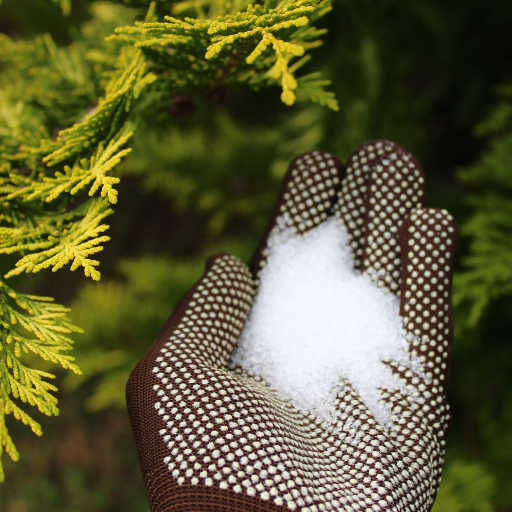
Epsom salt, scientifically known as magnesium sulfate (MgSO₄), has the components of magnesium, sulfur and oxygen. Magnesium is a central atom in chlorophyll, needed for photosynthesis while sulfate is an essential plant nutrient involved in synthesizing amino acids and vitamins. Epsom salt can be used properly to solve magnesium shortage which usually manifests itself through interveinal chlorosis on old leaves. For application dissolve 1 tablespoon of Epsom salt in a gallon of water and apply it to the soil once a month during the growing season or use it as a foliar spray by mixing 1 tablespoon in a gallon of water and spraying the leaves directly. This practice ensures there is enough magnesium for proper growth and healthier tomato plants.
Chemical Structure of Epsom Salt (Magnesium Sulfate)
Magnesium sulfate (MgSO₄) is an ionic compound consisting of one magnesium cation (Mg²⁺) and one sulfate anion (SO₄²⁻). Magnesium ion has valency two resulting from loss of its two outermost electrons making it play the role as central component in chlorophyll. Sulfate ion consists of one sulphur atom covalently bonded to four oxygen atoms arranged tetrahedrally. The chemical bond between magnesium and sulfate in Epsom salt is typically ionic, involving electrostatic attraction between positively charged magnesium ion and negatively charged oxide ion. The molecular weight of MgSO₄ is 120.37 g/mol with high water solubility property due to its high solubility that makes it relevant for agricultural uses as it dissolves quickly into solution hence more available for plants absorption..The rapid reaction with soilsand plant tissues indicates how effective epsom salts are at correcting this problem.Thus improving their nutritional profile ultimately leading to strong growth.
Historical Context of Epsom Salt in Agriculture
The agricultural use of Epsom salt dates back to the early 1600s following its discovery in Epsom, England. Historically, it was known that Epsom salt enhanced soil fertility as well as agricultural output. Early users found that magnesium sulphate could correct deficiencies particularly magnesium which is important for plant chlorophyll production and photosynthesis efficiency. Its usage involves several factors: high solubility of MgSO₄ (120.37 g/mol) allowing quick dissolution and root uptake; ionic composition enabling fast correction of magnesium deficits in the soil; ability to be a soil amendment and foliar spray hence versatile in application. There are also historical records from farming manuals dating back to the 18th century till now which confirm the practices followed by contemporary horticulture.
Benefits of Using Epsom Salt for Tomato Plants
When applied, it has several agronomic advantages on tomato plants and help improve their growth and yield. Application of Epsom salt or Magnesium Sulfate (MgSO₄) addresses common issues associated with a lack of magnesium which is one crucial mineral required for the synthesis of chlorophyll and photosynthesis. The most common symptom of magnesium deficiency in tomatoes is interveinal chlorosis where the leaf veins remain green while tissue between them turns yellow.A rapid remedy can be achieved through either adding epsom salts into soil or applying it as foliar spray due to its high solubility (120.37 g/mol) hence efficient absorption occurs almost immediately..
Additionally, Epsom salt can be used to enhance plant root health and enable them to take up more phosphorus and nitrogen for better leafy growth. The presence of Mg²⁺ in Epsom salt helps stabilize cell membranes and increases the plants structural stability.
Importance of Magnesium for Tomato Plants
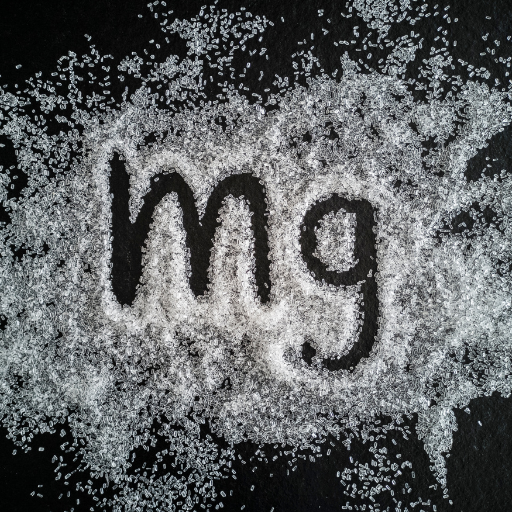
Role played by magnesium in tomato plant health and productivity. Chlorophyll molecule is mainly made up of magnesium, which is vital for photosynthesis that converts light energy into chemical energy. When magnesium is not available in sufficient quantities, the plants can have a lower rate of photosynthesis and growth may be stunted. Additionally, magnesium is critical for plant enzymatic functions such as activation of several enzyme systems involved in carbohydrate metabolism and nucleic acid synthesis. Correct magnesium levels enhance the ability of the plant to take up phosphorus which facilitates energy transfer and storage within the plant. It also helps nitrogen metabolism leading to production of amino acids and proteins needed for the growth and development of a plant. For this reason, it is important to maintain enough magnesium content since it promotes vigorous growth with healthy plants.
The Importance of Magnesium in Plant Growth
In the field of plant biology, there are many physiological and biochemical uses for magnesium. Firstly, as chlorophyll molecule’s central atom, presence of magnesium is crucial in ensuring efficient photosynthesis takes place where it changes light energy into a form that can be used by plants. The efficiency at which photosynthesis occurs directly determines how fast a plant grows or how vibrant it looks like holistically having been grown healthy. Furthermore, numerous enzymes need magnesium as their co-factor especially those responsible for DNA synthesis and phosphate assimilation (phosphorus) as well as nitrogen uptake via nitrate reductase Mg stabilizes ribosomes structure upon which protein synthesis depends thus affecting cellular aspects governing overall development.
Examples are found in key technical parameters such as thresholds for enzyme activation by Mg ions i.e., these are relevant for catalyzing reactions necessary during carbohydrate metabolism requiring adequate amounts of Mg2+. Inadequate supply leads to decreased enzymatic activity resulting into malfunctioning metabolic processes hence retarded growth among plants.. For example, chlorophyll formation requires an optimum concentration of between 0.15% -0 .50% of leaf dry weight in tomato plants. Anything below that level may be chlorotic and show interveinal yellowing as a sign of deficiency.
Indeed, empirical studies have established that maintaining soil Mg content at 50-100ppm (parts per million) is essential for nutrient uptake resulting in healthy plant growth. Due to its high solubility and quick assimilation, magnesium sulfate (Epsom salt) is often used as a quick fix in case of an inadequate amount of magnesium within the plant tissues or soil.
In conclusion, the fact that magnesium plays various functions related to plant growth underscores its essentiality. Appropriate fertilization strategies based on soil testing can ensure adequate magnesium levels, which support holistically stronger plants and lead to optimal agricultural productivity.
Signs of Magnesium Deficiency in Tomato Plants
Magnesium deficiency in tomato plants has noticeable symptoms that hinder plant development greatly. One main characteristic is Interveinal Chlorosis, where the tissue between veins turns yellow while the veins remain green. This usually starts happening in older leaves, but if not corrected, it will move to newer leaves as well. In some instances, such leaves may develop necrotic areas and fall off prematurely, thus reducing photosynthetic capacity.
Diagnostic parameters include magnesium concentration in leaf tissue for identifying Mg-deficiency situations of this kind. Optimum levels for tomato plants are found between 0.3% and 0.5% of the dry leaf weight . Less than 0.15% represents lack hence something needs attention . The ground’s mg status must also be observed; between 25 to 50 ppm of alteration should enable proper nutrient supply to occur here according to researcher recommendations
Addressing magnesium deficiency involves using either magnesium sulfate (Epsom salts) or other forms of magnesium-containing fertilizers. Rapid response is possible through foliar sprays with a solution of 1-2% magnesium sulfate, while soil amendments aid in ensuring long-term availability of this element. Regular examination of soil and leaf tissues could help maintain appropriate magnesium levels for normal growth and optimum fruit production.
The Benefits Derived from Magnesium on Tomato Fruit Production
Magnesium has an important role to play in tomato fruit production because it directly affects some plant physiological processes. Firstly, chlorophyll that is essential for photosynthesis – the green pigment whose synthesis is dependent on the presence of magnesium. Efficient photosynthesis results to synthesis adequate carbohydrates by plants required for fruit development and energy storage purposes. Thus, there are enough amounts of magnesium for better fruit set and size leading to increased yield.
Furthermore, activation of some plant enzymes, which are responsible for metabolic pathways, including protein synthesis, involves magnesium, too. Proper enzyme function contributes to the development and growth of tomato fruits, thereby allowing them to achieve their maximum size and nutritional content. According to research findings, tomatoes that contain sufficient magnesium exhibit high sugar levels (Brix level), hence good taste.
Its importance can be seen through technical parameters that dictate what should be done so as to have optimal levels regarding this mineral nutrient called magnesium. Concentrations between 0.3% to 0.5% dry weight (DW) for Mg in leaf tissues are necessary to maintain healthy plants as well as ensure productivity desired by farmers. Magnesium deficiencies are indicated when concentrations fall below 0.15%, causing retarded growth and meager fruit yields by tomato plants respectively. Similarly, maintaining soil test values ranging between 25-50 mg/kg extractable Mg would guarantee a continuous source of this element by crops grown in such soils as silt loams under these conditions. These desirable standards need not be overlooked, hence, the need to carry out regular soil and tissue analysis which fosters strong development and high yields of crops.
Mixing Epsom Salt into Soil for Tomatoes
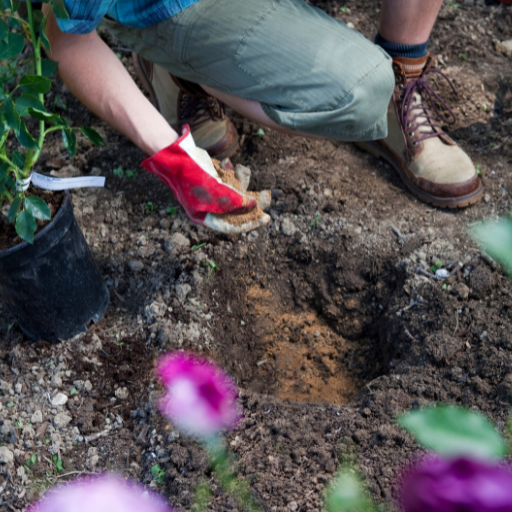
To effectively mix Epsom salt into soil for tomatoes, you first need to determine the deficiency of magnesium through soil testing. Once confirmed, dissolve one tablespoon of Epsom salt in a gallon of water in order to have a solution that can be applied directly or spray on the leaves of tomato plants. When applying this to the soil pour around each tomato plant and make sure that it thoroughly soaks. In order for them to be quickly absorbed in large amounts by leaves,they should be misted using a spray bottle. It is recommended that this process should be repeated every two weeks all through the growing season to ensure that adequate levels of magnesium are maintained. Close monitoring and adjustment based on plant response is crucial for obtaining good results.
Proper Ratios For Soil Mixing
For tomatoes, when incorporating Epsom salt into the soil, it is necessary to mix it rightly so that there will be no nutrient imbalances which can cause damage on plants. Present recommendations are to dissolve 1-2 tablespoons of Epsom salt in every gallon of water. This mixture can then be sprayed onto the ground around each tomato plant or applied as a liquid spray over their leaves. A soil analysis should be carried out before applying to confirm that magnesium deficiency exists and hence Epsom salts must be added. It is recommended that this process should take place between two and four weeks consecutively depending with plant response and ongoing results from soil testing. This helps maintain enough magnesium levels in order to have healthy growth and good production of fruits.
Methods Of Adding Epsom Salt To The Soil
There are many ways to effectively incorporate Epsom salts into our garden soils, enhancing its magnesium content and thereby boosting plant growth.The commonly adopted method is direct incorporation into the planting hole while transplanting.This method involves putting about 1 tbspoonful at the bottom before setting up the plant hole.This ensures root access throughout development.
The next way is referred to as sidedressing, where Epsom salt is sprinkled around a base area near other established crops.Efficient absorption may only take place if approximately 1 tablespoon per plant has been lightly worked into the upper surface.For optimal magnesium supplementation as the crop grows, this procedure can be repeated after every 4 weeks.
Additionally, epsom salt is often mixed with soil as a pre-planting soil amendment. In general, for your garden bed, mix one cup of epsom salts for every 100 square feet of garden space, which will accommodate several plants high in magnesium requirement.
To ensure the best results, use these methods depending on the test results and overall plant health. Routine soil testing maintains desirable levels of magnesium which are neither deficient nor excessive, thus avoiding other nutrient imbalances.
When To Apply And How Often
The timing and frequency of Epsom salt application are crucial for better outcomes. This can take place immediately at planting time, either by mixing approximately 1 tablespoon per gallon into the soil where seeds will be planted or around the transplant base.
During the growing period, it is better to apply epsom salts monthly (every four to six weeks). The latter ensures stable magnesium supplies in soils necessary for good plant development. For established plants, do a similar side dressing but add one tablespoon next to each plant’s base and slightly mix it in topsoil.
Epsom salt may also be used as foliar spray besides its common usage. Dissolve two tablespoons of Epsom salt in a gallon of water and directly spray it onto the leaves. It will allow plants to quickly absorb magnesium, which is useful especially when you see signs of magnesium deficiency such as yellowing leaves with green veins. For the best result, foliar applications can be done bi-weekly during growing season.
Timing and frequency should be adjusted accordingly based on soil test results and plant requirements. Too much application may cause nutrient imbalances; therefore, one has to monitor magnesium levels and the general health of plants. Regular soil and foliar testing will give you ideas concerning how often to put Epsom salts on the ground or foliage.
Applying Epsom Salt via Foliar Spray
The foliar spray of Epsom salt helps in a quick absorption of magnesium by plants through the leaves. As per reliable sources, mixing two tablespoons of Epsom salt in one gallon of water makes an efficient spray solution. These substances can be sprayed directly on leaves to uptake magnesium quickly, which is essential for chlorophyll synthesis and overall plant health. Foliar spraying is recommended every two weeks during the growing season especially when there are signs of magnesium deficiency such as interveinal chlorosis characterized by yellowing between leaf veins. This technique is also useful for plants grown in soils with low levelsofmagnesium or when quick correction of deficiencies is necessary.
Advantages of Using Epsom Salt as Foliar Feed for Tomato Plants
Epsom salt foliar application has several benefits for tomato plants. Authoritative sources have shown that applying magnesium directly to tomato leaf surfaces using a foliar spray improves nutrient use efficiency through better growth and increased yield potential. Quick absorption enhances chlorophyll production, which enables photosynthesis to take place and result in lush green foliage thus aiding fruit development.
Tomato crops supplied with enough magnesium through their leaves exhibit higher resistance to environmental stresses like drought and temperature fluctuations. The approach also helps in controlling blossom-end rot, which affects tomatoes due to insufficient calcium, since uptake of Mg could affect Ca utilization within the plant.
This will ensure that you achieve optimum results by having a solution comprising 2 tablespoons of Epsom salts in one gallon water applied bimonthly. Some descriptions about this solution include approximately 1.2% magnesium sulfate meaning it won’t harm any tissues but effective at concentration levels proposed . Monitoring the response from your plant then adjusting the frequency with which you apply nutrients will guarantee improved management techniques.
Proper Dilution Rates for Foliar Spray
Different concentrations are suggested to achieve proper dilution rates for foliar sprays using Epsom salts depending on the specific needs of plants. An optimum mixture is usually 1-2 tablespoons of Epsom salt per gallon of water. This complies with recommendations for tomato plants and ensures a solution within the range of 1.2% magnesium sulfate. The best ratio for other houseplants could be one teaspoon per gallon of water or even further dilute for safer slow release fertilization that may be required in some cases. Before applying it onto leaves, make sure that you dissolve Epsom salts using warm water thus distributing it evenly and preventing any possibility of leaf burn. Plant response should always be observed to check whether adjustments are necessary taking into consideration factors like plant species, stage growth and individual nutritional requirements.
Best Practices for Foliar Application
When making foliar applications, complete coverage of leaf surfaces is important for maximum nutrient uptake by the crop. Start by choosing a sprayer with the capability to produce fine mist so as to ensure even and full coverage throughout the plant. Apply during early mornings or late evenings to reduce evaporation rates due to reduced temperatures while ensuring adequate time for absorption by leaves . Avoid windy conditions when spraying so as not waste substances on wrong places and target accuracy can be obtained sparingly
The sprayer should be kept around 12-18 inches above the plants to ensure complete coverage without harming them. A pH of between 5.5 and 6.5 in foliar spray is ideal because it enhances nutriment absorption through stomata.
Complementary Nutrients and Amendments
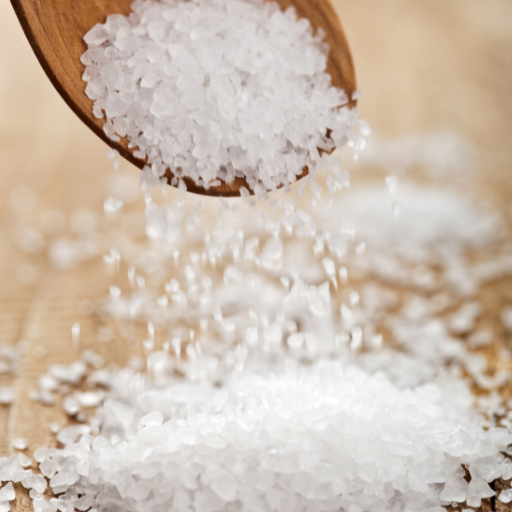
Besides magnesium sulfate, calcium and potassium are necessary complementary nutrients for optimal plant health. Calcium helps with cell wall integrity, preventing problems such as blossom end rot, while potassium is involved in various plant functions such as water uptake, enzyme activation and photosynthesis. The fertility and structure of soils can be improved by introducing organic matter like compost or well-rotted manure which encourages healthy root development and microbial activity. Additionally, when used as an amendment mycorrhizal fungi can help improve nutrient and water intake efficiency thus promoting resilient plants that are robust.
Strengthening Epsom Salt with Other Plant Nutrients
Combining other plant nutrients with Epsom salt can greatly enhance the health and growth of plants. Mainly composed of magnesium sulphate, Epsom salt provides essential magnesium and sulphur needed for photosynthesis and enzymatic reactions. Nevertheless, it is most beneficial when used synergistically with other nutrients.
- Calcium (Ca):
- Source: Gypsum (calcium sulfate) or calcium nitrate
- Function: It develops firm cell walls that reduce problems like blossom end rot or tip burn.
- Technical Parameters: For most crops, soil Ca levels ought to be 1,000 – 2,000 mg/kg. Application via foliar sprays using calcium nitrate is often effective at concentrations of 1-2%.
- Potassium (K):
- Source: Potassium sulfate or potassium nitrate
- Function: These control stomatal openings therefore increase resistance to drought stress while facilitating synthesis of carbohydrates.
- Technical Parameters:
- Soil K levels should range from150-250 mg/kg. Foliar application usually involves 0.5-1% concentration.
- Nitrogen (N):
- Source: Ammonium nitrate or urea
- Function: Nitrogen supports amino acid synthesis; protein production; chlorophyll creation among others.
- Technical Parameters:
- Avoiding deficiency or toxicity requires a balance between nitrate nitrogen levels, typically around 30-50 ppm in soil solutions. Solutions for urea foliar concentrations are typically effective at 0.5-2%.
When introducing these nutrients into your programme, ensure that you provide accurate rates as per the soil test and crop requirements. Over-fertilization may lead to nutrient imbalances and environmental damage. Frequent monitoring combined with integrated nutrient management practices will enhance plant health and productivity.
Use of Organic Amendments Along with Epsom Salt
By using organic amendments in combination with Epsom salt (magnesium sulfate), the soil will have a healthier balance of nutrients to foster better plant growth. Such organic amendments include composts, manure, and bone meal which serve as a source of slow-release essential minerals while enhancing water retention, soil structure, and microbial activity.
- Compost:
- Source: Decomposed organic matter such as kitchen scraps; garden waste like leaves.
- Function: Provides wide range of macronutrients and micronutrients for plants; helps establish healthy populations of beneficial microorganisms; improves soil structure/tillage.
- Application Rate: Generally tilled into topsoil one inch deep at one to two inches per season.
- Manure:
- Source: Livestock waste especially cow dung or other animals such as horse or chicken manure.
- Function: It contains high levels of nitrogen (N), phosphorus (P) and potassium (K) elements that steadily disintegrate leaving behind rich organic content on soils.
- Application Rate: It is recommended that 20-30 tons/acre be applied, ensuring it is well-composed to prevent pathogen transmission and nutrient burnout.
- Bone Meal:
- Source: Ground animal bones
- Function: High in phosphorous and calcium it aids in root establishment further improving flowers set up processes
- Application rate: Incorporated at planting or during the growing season at the rate of 1-2 pounds per 100 square feet
These organic amendments, when coupled with Epsom salts, could help rectify such potential deficiencies, thus gradually supplying extra nutrients like nitrogen, phosphorus and potassium. This approach ensures a total nutrient regimen that addresses short-term needs through the use of Epsom salt and sustains plant health through adding organic matter. One has to do soil testing from time to time so as to adjust the sort and amount of amendments involved thus avoiding nutrient imbalance and ensuring best growth conditions.
Soil Testing and Adjustment Recommendations
Soil testing is important in determining nutrient levels, pH balance and overall soil condition which when done right can guide amendment application for optimum plant growth. Start by taking several soil samples from various parts of the field or garden in order to get a representative analysis. These samples should be taken from the root zone which is usually about 6-8 inches deep. The next thing is to send the collected soils to a certified laboratory for more thorough examination.
Once you receive your soil test results check primary nutrients (nitrogen, phosphorus, potassium), secondary nutrients (calcium, magnesium sulfur), pH level. Based on these results amend your soil in response to any deficiencies or imbalances. For instance lime can be applied if pH too low (acidic) while high pH (alkaline) can be lowered down by applying sulphur. For example nitrogen deficits may necessitate targeted amendments; bone meal for phosphorous needs; potassium sulfate for improving potassium levels.
Incorporating organic matter like manure or compost into soil improves its structure and increases microbial activity, which helps promote long-term soil health. Also, retest your soils periodically so that you can monitor changes in them and adjust your soil management practices accordingly. This will maintain fertility over time and create conditions favorable for plant growth.
Environmental Considerations and Soil Health
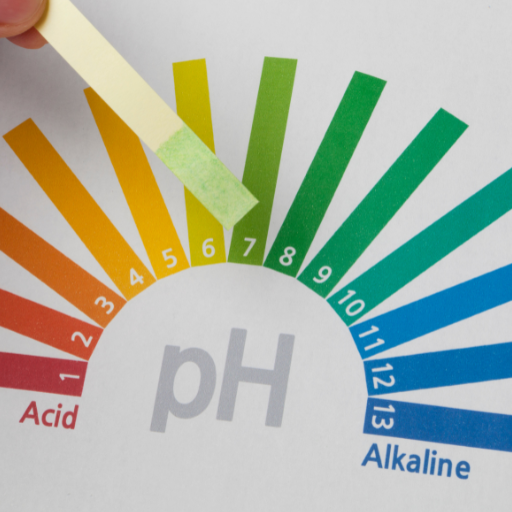
Soil health is a concept that demands a holistic approach balancing environmental sustainability along with agricultural productivity. A vital factor to remember is to reduce soil loss from erosion through the use of cover crops, contour farming and maintaining grassed waterways. Such methods help to preserve the topsoil, which includes preserving it for its nutrients by wind and water due to lack of particles removal
Another aspect is keeping organic matter in soil, which improves microbial activity, water retention capacity, and soil structure. Such practices as crop rotation, reduced tillage, or incorporation of organic amendments can substantially increase the amount of organic matter in soil. Furthermore, overusing chemical fertilizers and pesticides may lead to reduced biodiversity in soils, thereby contaminating water sources.
Therefore, by considering these strategies, farmers can achieve the sustainable management of soil resources required for long-term agricultural viability and environmental resilience.
Considerations on pH Balance with Epsom Salt
Epsom salt could influence the pH level of soils—though indirectly. While epsom salt itself has a neutral pH; yet it provides magnesium nutrient that is key to plant growth into the soil. This remedy will be most effective in cases where there’s a scarcity of magnesium in the soil, resulting in increased chlorophyll synthesis, thus making nutrients more efficient.This nevertheless does not mean that Epsom salt should be seen as a solution for addressing pH imbalances because it does not directly affect them at all times.A comprehensive analysis on the specific requirements regarding pH levels would hence ensure that one makes informed decisions regarding such issues by applying appropriate agents such as lime for acidic types or sulphur towards alkaline ones.This ensures proper balance between acidity/alkalinity & nutrient content required for healthy productivity.
Effects on Soil Microbial Activity
The primary factor that helps keep soils fertile and healthy lies within their microbial activities.Therefore, adding organic material brings about soil fertility since this serves as a food source for beneficial microorganisms, thus promoting nutrient cycling and enhancing plant growth. Conversely, synthetic fertilizers can alter nutrient balances and decrease biodiversity, leading to soil degradation, which may affect the microbial communities. Organic amendments like compost or manure should be used in order to support diverse microbial populations that keep a healthy microbial ecosystem. Crop rotation and including cover crops also maintain robust microbial environment since they avoid depletion of certain nutrients or reduction of soil-borne diseases. Therefore, organic inputs must be integrated with sustainable land management practices taken into account thus ensuring soil health especially concerning microbial life.
Sustainable Practices in Tomato Plant Care
There are several main strategies for implementing sustainable practices in tomato plant care. Firstly, organic compost and mulch should be used to prioritize soil health by improving its structure, water retention, and root system development, thereby reducing dependence on artificial fertilizers. Secondly, water-saving techniques such as drip irrigation or soaker hoses are essential for efficient water utilization while reducing evaporation losses and directing water efficiently towards the roots.Thirdly, integrated pest management (IPM) should be adopted as a biological means of controlling pests; this entails using beneficial insects as well as resistant plants and crop rotation which prevent outbreaks without necessarily applying chemical pesticides.Additionally, companion planting can deter pests and enhance plant growth.Lastly, proper crop rotation ensures that soil is not depleted, hence protecting against diseases that come from the soil, keeping it fertile over long time periods, thereby promoting good health of the plantation.
Frequently Asked Questions (FAQs)
Q: What are the benefits of using Epsom salt for tomato plants?
A: Epsom salt provides both magnesium and sulfur, which are essential nutrients for tomato plants. Magnesium helps with chlorophyll production and improves the uptake of nitrogen, phosphorus, and sulfur, while sulfur contributes to the formation of important enzymes and proteins. Together, they support healthy foliage, strong cell walls, and increased flower and fruit production.
Q: How do I mix Epsom salts per gallon of water for my garden?
A: To mix Epsom salts per gallon of water for your garden, dissolve one tablespoon of Epsom salt in a gallon of water. This solution can be used to water your plants or to fill a spray bottle for foliar application, helping to ensure that your plants absorb the magnesium and sulfur directly through their leaves.
Q: How often should I add Epsom salt to my tomato plants?
A: For optimal results, it is recommended to add Epsom salt to your tomato plants every two to four weeks during the growing season. You can apply it as a soil drench by watering plants with the Epsom salt solution, or as a foliar spray using a spray bottle.
Q: Can I use Epsom salt for other vegetables in my garden?
A: Yes, Epsom salt can be beneficial for other vegetables in your garden, especially those that require higher levels of magnesium, like pepper plants and roses. Always follow the same mixing ratio of one tablespoon of Epsom salt per gallon of water and adjust the frequency of applications as needed.
Q: How much Epsom salt should I use per plant or per foot of plant height?
A: For tomato and pepper plants, a general guideline is to use one tablespoon of Epsom salt per foot of plant height. Alternatively, you can add a cup of Epsom salts to the bottom of each hole when planting new seedlings to give them a good start.
Q: Are there any signs that my plants need Epsom salt?
A: Signs that your plants may need Epsom salt include yellowing leaves between the veins (interveinal chlorosis), poor flower and fruit development, and slow growth. These symptoms indicate a deficiency in magnesium, which can be addressed by adding Epsom salt to your garden routine.
Q: Can Epsom salt be used as a fertilizer for my vegetable garden?
A: Epsom salt is not a complete fertilizer but can be a valuable supplement to your usual fertilizing routine. It supplies magnesium and sulfur, which are not always available in common fertilizers. By adding Epsom salt to your vegetable garden, you can enhance the health and productivity of your plants.
Q: Should I dilute Epsom salt when using it as a foliar spray?
A: Yes, when using Epsom salt as a foliar spray, you should dilute it to ensure it is safe for direct contact with the foliage. Mix one tablespoon of Epsom salt per gallon of water and apply the solution with a spray bottle, coating the leaves thoroughly.
Q: Is there a specific time to apply Epsom salt for optimal results?
A: The best time to apply Epsom salt is during the early morning or late evening when the temperatures are cooler, and plants can absorb the nutrients more effectively. Consistent applications every two to four weeks during the growing season will yield the best results.






